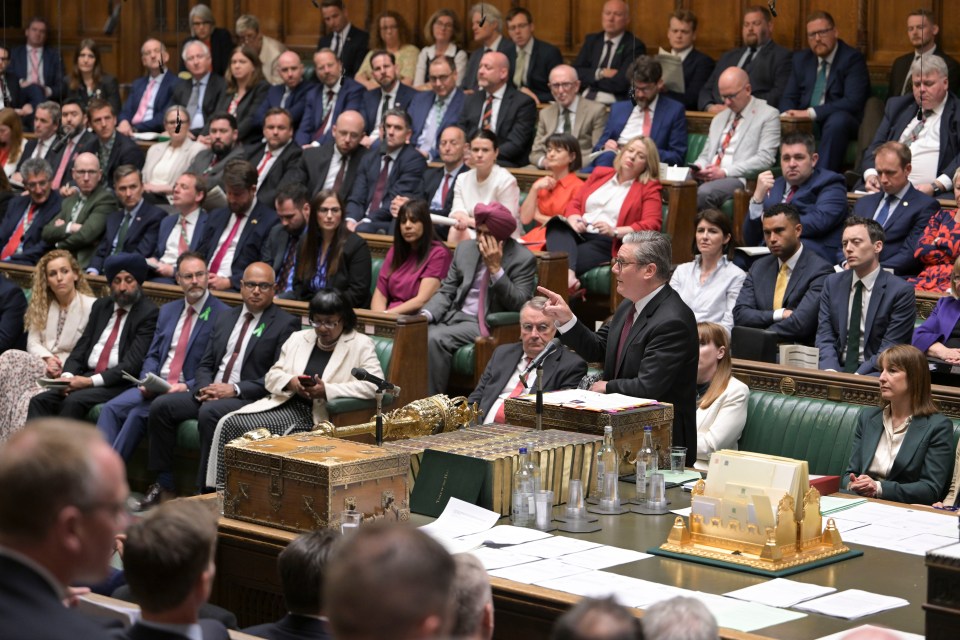All the benefits that could be STOPPED over easy holiday mistake including Universal Credit and PIP
A SIMPLE holiday error could see a host of benefits including Universal Credit and PIP stopped.
You may even have to pay back any overpaid money and in a worse case scenario an up to £5,000 penalty too.
Going abroad is classed as a change in circumstances which must be reported to the office that pays your benefits.
If you do not, it may be reduced or stopped and you could be told to pay back any overpaid amounts.
If you are found to have deliberately not reported going abroad, it is classed as benefit fraud and you could be taken to court or asked to pay a penalty of between £350 and £5,000.
However, at which point you have to report going abroad varies based on the benefit you are receiving.
For example, you don’t have to report going abroad if you’re on Attendance Allowance (AA) and going away for less than four weeks.
If you do need to report going abroad, you need to tell your local Jobcentre Plus or the office that pays your benefit.
This is the full list of benefits where you may have to report going abroad this summer:
- Universal Credit
- Jobseeker’s Allowance
- PIP
- Disability Living Allowance (DLA)
- Employment and Support Allowance (ESA)
- Attendance Allowance
- Carer’s Allowance
- Pension Credit
- Housing Benefit
- Statutory Maternity Pay (SMP)
- Maternity Allowance
- Child Benefit
- Guardian’s Allowance
Here are the rules on reporting going abroad for the major benefits.
Universal Credit
If you’re on Universal Credit, you can stay abroad for one month and carry on receiving payments.
You still have to tell your work coach you’re going away and have to carry on meeting the conditions of your claim.
For example, if you are in the intensive work group and have to spend a minimum amount of hours per week looking for a job, you have to continue doing this.
There are exceptions to the one-month rule though – such as if a “close relative” dies while you are abroad and it is not deemed reasonable for you to return to the UK.
Meanwhile, you can carry on claiming Universal Credit for up to six months if you have gone abroad for medical treatment.
You can report going away on holiday by signing in via your Universal Credit account.
Jobseeker’s Allowance
If you are on New Style or income-based JSA you must report if you are leaving Great Britain for any length of time.
You can let the Government know you are going away by calling the JSA helpline on 0800 169 0310.
You can also write to the Jobcentre Plus office that pays your JSA.
You can find your nearest office by using its online branch locator.
PIP and DLA
You have to tell the DWP if you are on Personal Independence payments (PIP) Or Disability Living Allowance (DLA) and going away for more than four weeks.
You have to tell the Government the date you are leaving the country, how long you are going away for and which country you plan to visit.
You also need to tell the DWP why you plan to go abroad.
You can call the Disability Service Centre on 0800 121 4433 to inform them you are going away if you are on PIP or DLA.
Attendance Allowance
Like with PIP and DLA, you have to tell the DWP if you plan to go abroad for more than four weeks and are on AA.
You can claim AA for up to 13 weeks while abroad, or 26 weeks if you’re going away for medical treatment.
Carer’s Allowance
If you are on Carer’s Allowance, you can go away for up to four weeks over a six-month period while still receiving the benefit.
But you still have to report this or risk having to pay back your entitlement or paying a fine.
You can report going away via the Government’s website or by calling the Carer’s Allowance Unit on 0800 731 0297.
Pension Credit
You can claim Pension Credit for up to four weeks if you are abroad.
This is extended to eight weeks if the absence is due to the death of your partner or a child.
However, you still need to report going abroad.
You can do this via the Government’s website or by calling the Pension Credit helpline on 0800 731 0469.
Housing Benefit
You can usually only carry on claiming Housing Benefit for up to four weeks if you go abroad.
Like with Pension Credit, you can carry on receiving it for eight weeks if you have to go abroad because a close relative has died.
But you should contact the Benefits Service on 020 7364 5000 to let them know you’re going away.
You might also be able to via your local council’s website. You can find your local council by using the Government’s online locator tool.
Are you missing out on benefits?
YOU can use a benefits calculator to help check that you are not missing out on money you are entitled to
Charity Turn2Us’ benefits calculator works out what you could get.
Entitledto’s free calculator determines whether you qualify for various benefits, tax credit and Universal Credit.
MoneySavingExpert.com and charity StepChange both have benefits tools powered by Entitledto’s data.
You can use Policy in Practice’s calculator to determine which benefits you could receive and how much cash you’ll have left over each month after paying for housing costs.
Your exact entitlement will only be clear when you make a claim, but calculators can indicate what you might be eligible for.
Do you have a money problem that needs sorting? Get in touch by emailing [email protected].
Plus, you can join our Sun Money Chats and Tips Facebook group to share your tips and stories

















